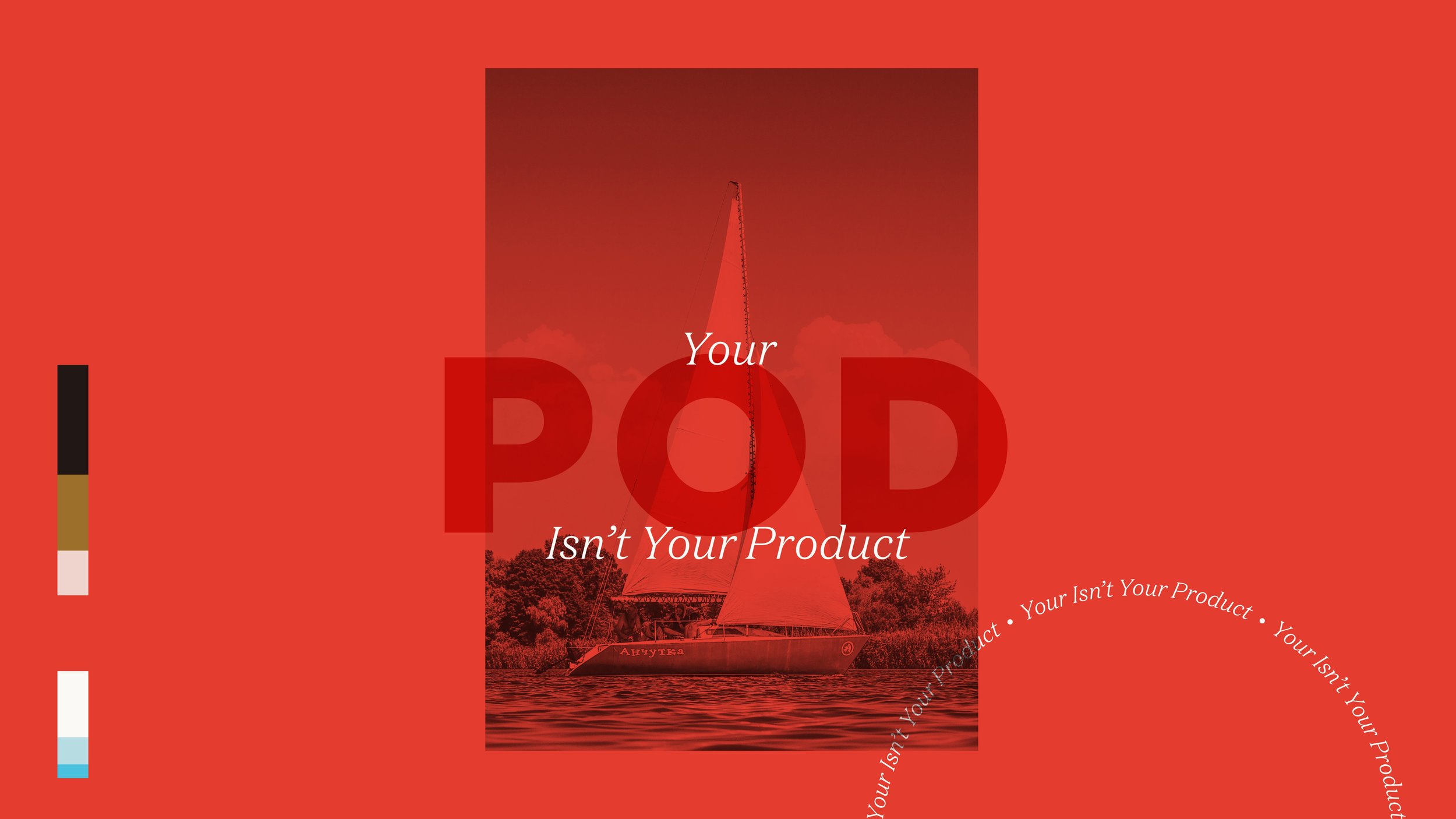Your POD Isn’t Your Product
In today's saturated market, brands who are creating meaningful impact are those who understand branding goes much deeper than pretty website visuals and responsive mobile design. When done holistically, branding can build communities of lifelong customers.
Branding is layered, refined, tested, and ultimately reflects a brand's values to its consumers.
Many factors play a role in showcasing what your brand values. In this article we’ll look at one specific way to communicate your brand’s values: point of difference.
As we look to the future of branding, we’ll cover out-of-date notions around POD and how our understanding of POD is evolving to stay relevant with the transformations happening today in workplace cultures and in society.
Goodbye, expired point of difference notions 👋
Traditionally, POD has answered the question, “What makes you different?” Often your POD was one specific ‘point’ focused on why you were different from your competitors.
In the past, this began as recognizing functional benefits such as price, product function, speed, or convenience. However overtime, the focus on functional benefits alone no longer holds the weight that it once did. This is due to the fact that companies, like Amazon, can almost always provide a product at a lower price and faster. And if it’s not Amazon, there’s likely someone else out there doing functional benefits better.
We’re not saying that functional benefits don’t matter. They certainly do. But today, your brand must elevate beyond your functional benefits to the emotional benefits you offer for your consumers.
And the surest way to connect with your audience on an emotional level is by showcasing your brand’s values in a way that resonates with your audience.
So what does this mean for the future of point of difference?
Hello, new point of difference notions 👋
Today, when we approach point of difference, there are a few key ideas driving us.
1. Your POD is rooted in HOW you do what you do, not WHAT you do. Our approach to point of difference starts with creating a company belief statement rooted in your Brand Heart. This means we identify and message the WHAT, HOW, and WHY behind your product. ‘What’ explains what you believe about your product, ‘how’ represents how you approach your product, and ‘why’ gives clarity to why you approach it the way you do.
2. Your HOW should reflect what you value as a brand. We all know consumers are increasingly sharing opinions and holding brands accountable, which means it’s important that your brand walks the walk. The most authentic way to show what you value is through HOW you approach your product.
At Hoot, our HOW of a human-centered approach to creative problem solving informs how we approach brand in terms of both framework and how we work with our clients. In the download above, you will see a collision of our deepest values resulting in our people-first approach to brand.
3. Focus on why someone should choose you, not what makes you different. Why? Because what makes ‘my brand’ different is self-focused and rooted in scarcity, whereas, why someone should choose your brand is focused on your audience and connecting with them on an emotional and personal level.
According to Economic Innovation Group, nearly 5.4 million applications were filed to form new businesses in 2021 — the most of any year on record. With the barriers to entry for business lower than ever, the idea of ‘winning’ or ‘beating’ your competitors and being the ‘best’ has expired. Not only is this no longer attainable, it puts your audience’s needs secondary on your list of priorities, which is one of the biggest mistakes a brand can make and a sure way to quickly become irrelevant.
Instead, find your niche target and focus on how to serve them based on what they need – not what your competitors are doing. There is plenty of room for all of us if we each are truly serving an audience in need. By focusing on your audience, you’re likely to experience greater innovation and adaptability rather than focusing on “competition.”
4. Know your audience on a deep level, so you can find shared values. In a transactional relationship, your POD may be discussed in terms of function, but in a personal relationship, POD is about shared values.
When you understand the values and identity you share with your consumer you form an intimate bond that can create lifelong customers. To maintain this relationship, speak directly to your audience. Are their needs changing? How can you continue to add value to their lives through your offerings?
Through knowing your audience and communicating with them regularly, you can make the necessary changes to stay relevant in their lives and remind them of why they should choose you. There has never been an easier time in the history of branding to speak directly with your consumers. Take advantage of that.
5. Your POD will change depending on who you’re talking to. And that’s okay. There’s an idea that your POD is a set in stone statement that you can rattle off to anyone you’re speaking to. Where this misses the mark, is that this doesn’t take into consideration who you are talking to and why they should care.
At Hoot, our POD of a human-centered approach to creative problem solving ebbs and flows depending on who we’re speaking to. What’s important to us is that we prioritize connection, and we do that by making it personal.
This might look like emphasizing any of the following: being women-led, our people-first approach, our internal culture work, the fact we have strategic partners trained in psychology, or our holistic, inside–out approach. All of these angles support our overarching POD of a human-centered approach to creative problem solving. It’s okay to lean into different angles that resonate differently depending on who you’re speaking to and what they care about most.

